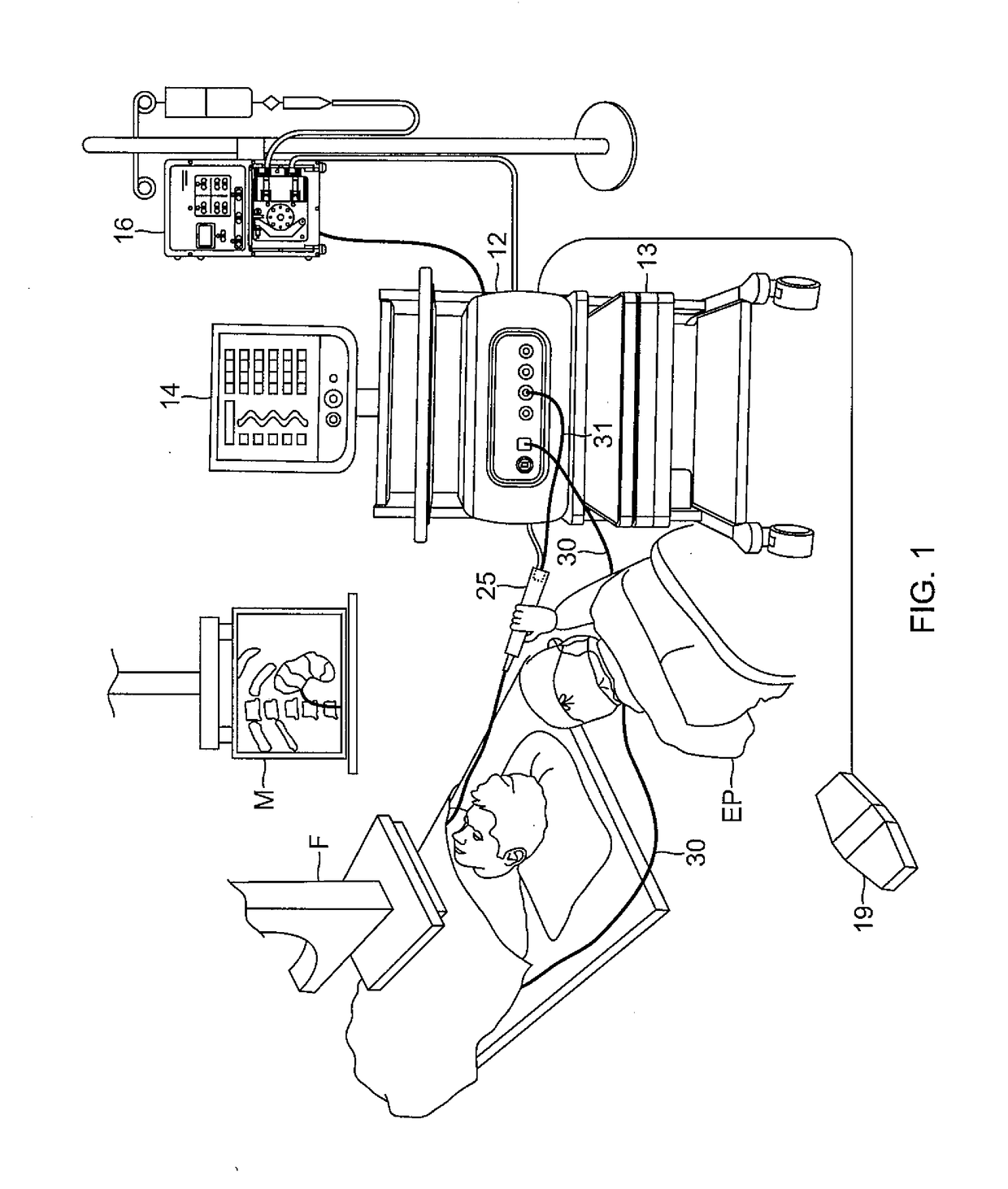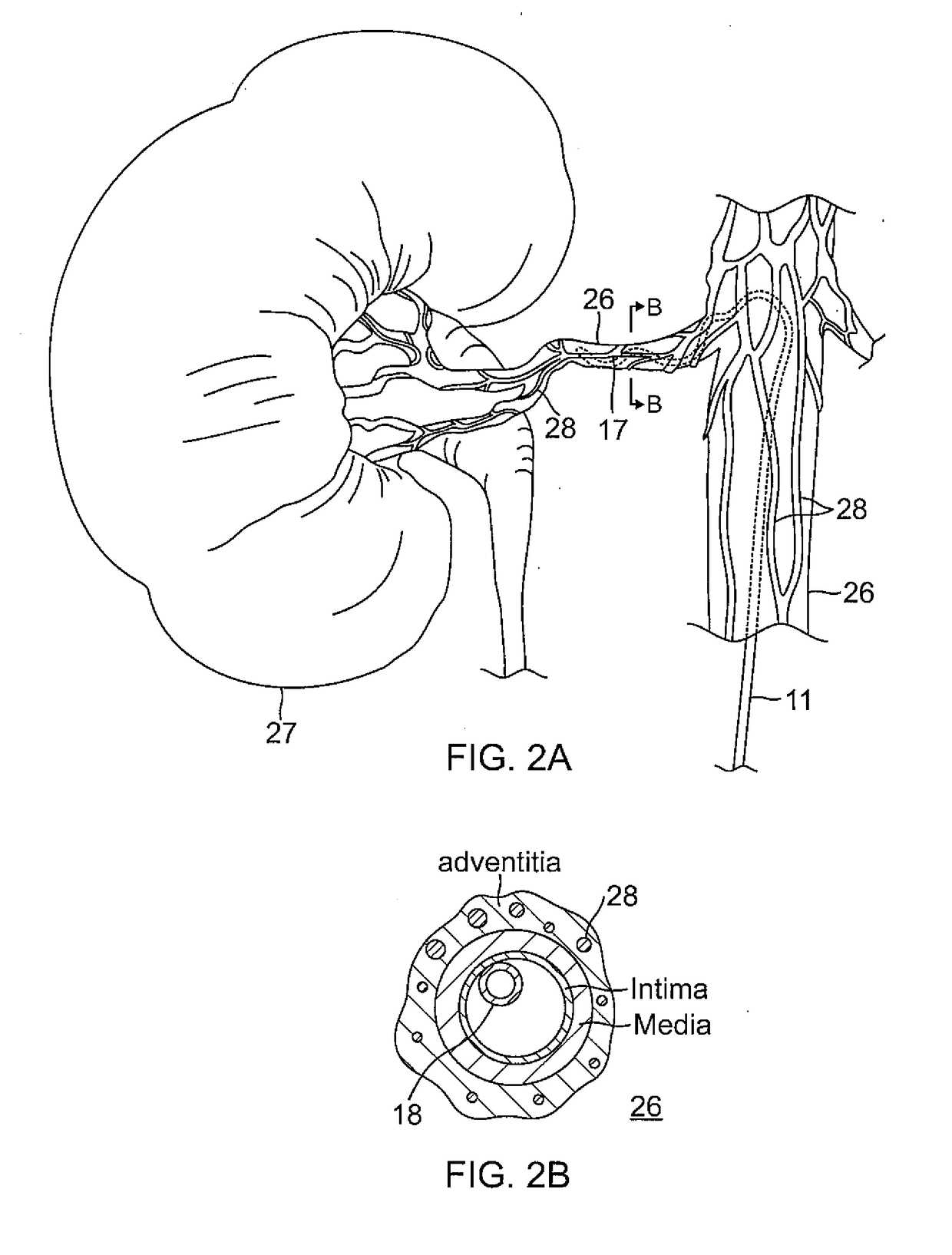System and method for controlling catheter power based on renal ablation response
a technology of renal ablation and catheter power, applied in the field of invasive medical devices, can solve the problems of global sympathetic denervation below the chest, resistance hypertension is a common clinical problem, and the blood pressure rises, so as to reduce the power level, and reduce the power level
- Summary
- Abstract
- Description
- Claims
- Application Information
AI Technical Summary
Benefits of technology
Problems solved by technology
Method used
Image
Examples
Embodiment Construction
[0039]The present invention is directed to a catheter-based ablation system 10, with embodiments illustrated in FIG. 1, including a catheter 11, an RF generator console 12, a power supply 13, a display monitor 14, an irrigation pump 16, and an ablation actuator 19 (e.g., a foot pedal). The system 10 is adapted for renal ablation performed within a renal artery 26 near a kidney in denerving surrounding nerves 28, as shown in FIG. 2A and FIG. 2B. In some embodiments as shown in FIG. 3, the catheter 11 includes a control handle 25, a catheter body 15 and a helical distal portion 17 on which electrodes 18 are mounted, each adapted for contact with a different surface area of the inner circumferential tissue along the artery 26. As known in the art, the catheter enters the body of patient P via an opening in the femoral artery and is then advanced through the patient's vasculature by an electrophysiology professional EP under fluoroscopic guidance by means of a fluoroscope F and a monito...
PUM
 Login to View More
Login to View More Abstract
Description
Claims
Application Information
 Login to View More
Login to View More - R&D
- Intellectual Property
- Life Sciences
- Materials
- Tech Scout
- Unparalleled Data Quality
- Higher Quality Content
- 60% Fewer Hallucinations
Browse by: Latest US Patents, China's latest patents, Technical Efficacy Thesaurus, Application Domain, Technology Topic, Popular Technical Reports.
© 2025 PatSnap. All rights reserved.Legal|Privacy policy|Modern Slavery Act Transparency Statement|Sitemap|About US| Contact US: help@patsnap.com



